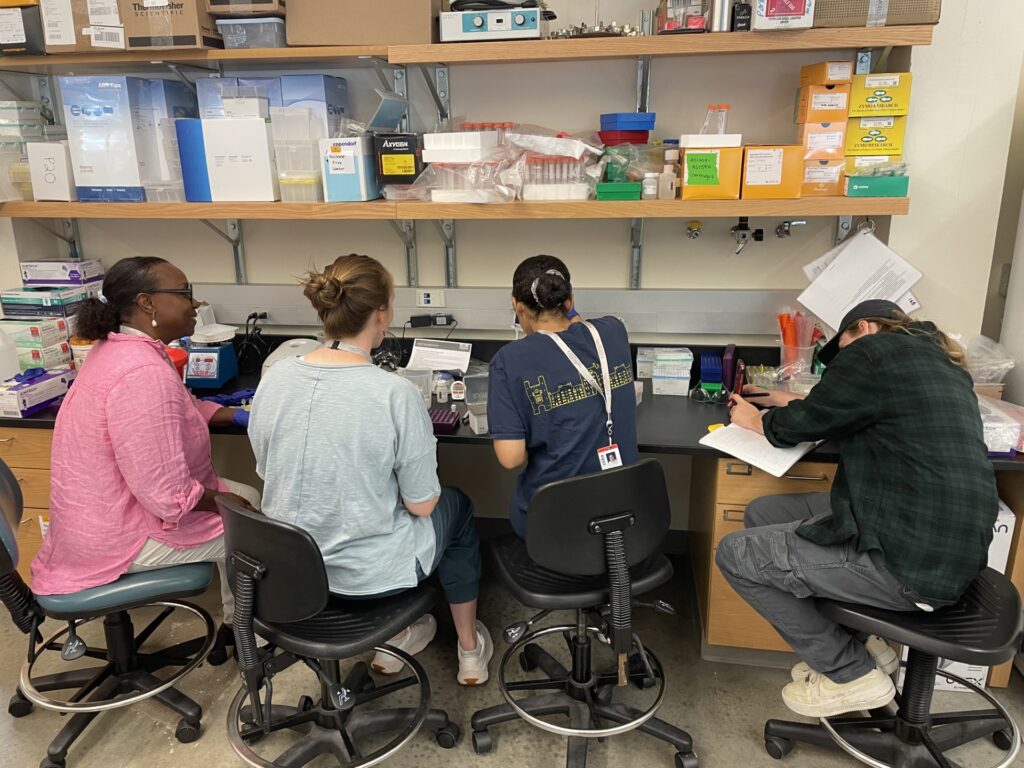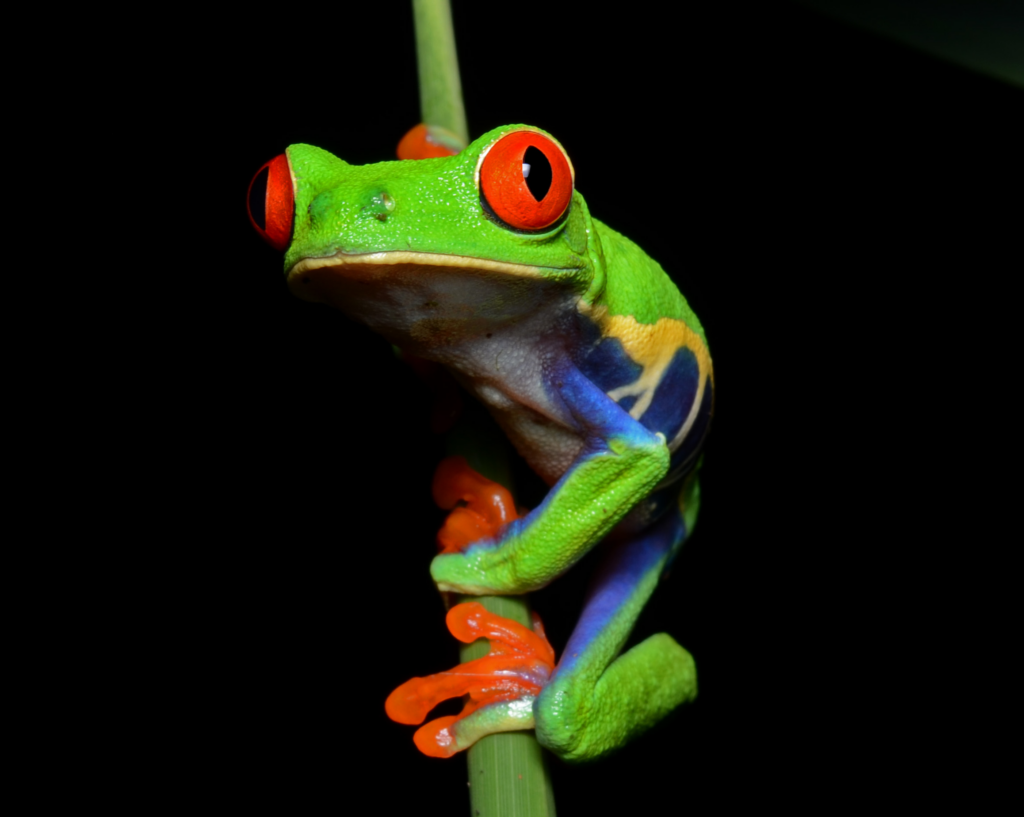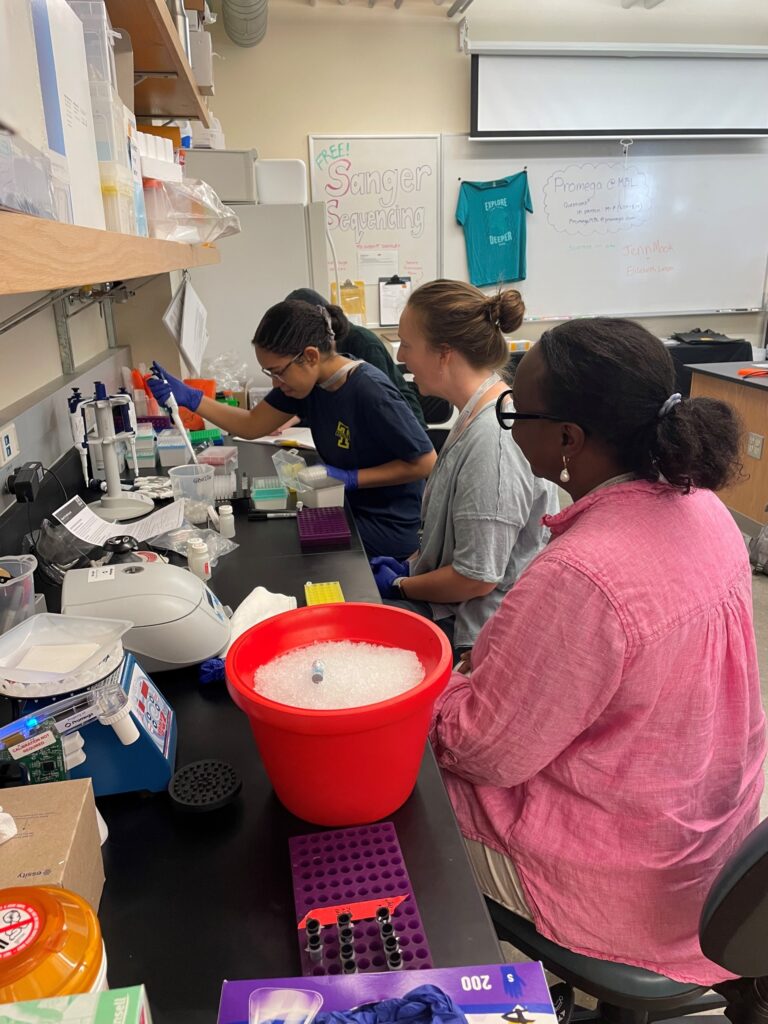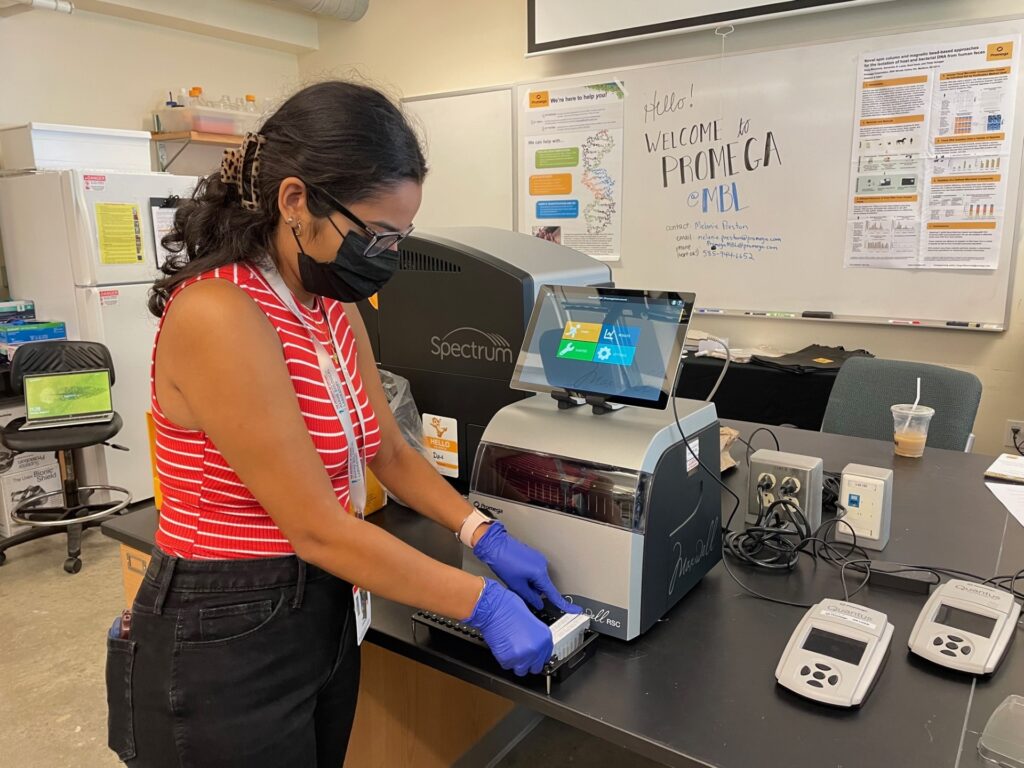
Sally Seraphin’s life in the research lab started with rats and roseate terns. Chimpanzees and rhesus macaques came next, then humans (and a brief foray into voles). When she pivoted to red-eyed tree frogs, Sally once again had to learn all kinds of new techniques. Suddenly, in addition to new sample prep and analysis techniques, she needed to get up to speed on amphibian care and husbandry. That led her to the Marine Biological Laboratory (MBL) in Woods Hole, MA.
“It’s a seaside resort atmosphere with experts in every technology you can imagine,” Sally says. “It’s a place to incubate and birth new approaches to answering questions.”
Sally spent the past two summers at MBL learning everything she needed to know about breeding and caring for amphibians. During that time, she also worked closely with Applications Scientists from Promega who helped her start extracting RNA from frog samples.
“The hands-on support from industry scientists is definitely unique to Promega and MBL,” she says. “It’s rare to have a specialist on hand who can help you learn, troubleshoot and optimize in such a finite amount of time.”
Adopting a New Model Organism

Sally studies how early stress impacts brain and behavior development. She hopes to deepen our understanding of how adverse childhood experiences connect to mental illness and bodily disease later in life. In the past, she studied how factors such as parental absence affected the neurotransmission of dopamine in primates. Recently, she changed her focus to developmental timing.
“Girls who are exposed to early trauma like sexual or physical abuse will sometimes reach puberty earlier than girls who aren’t,” Sally explains. “And I noticed that there are many species that will alter their developmental timing in response to predators or social and ecological threats.”
Sally’s CV includes major research institutes such as Oxford University and Emory University, where primate research was readily supported. When she became an Assistant Professor at Trinity College, a liberal arts college of 2,200 undergraduates in Connecticut, Sally needed to adapt her research for a model that she could easily study using the resources available to her.
While Sally briefly considered killifish, she soon selected two species of neotropical frogs to base her lab around. Glass frogs and red-eyed tree frogs both hatch early in response to adverse conditions. For glass frogs, the key factor is parental neglect; for their red-eyed counterparts, it’s a predator attacking the clutch. She planned to breed the frogs and trigger early hatching in some, while letting others hatch on their own. From there, she would compare gene expression patterns between the two groups.
To kickstart her work with the new models, Sally applied for a Whitman Fellowship at MBL. The fellowship brought her and several students to MBL for the summer to learn about frog care from Marko Horb, an MBL Senior Scientist and National Xenopus Resource Director. Sally mentions that the opportunity to bring students along was a huge benefit.
“My tenure and promotion are closely tied to my research productivity with undergraduates, as well as undergraduate training,” she says. “At MBL, I can be next to them in the lab modeling a learner’s perspective and building skills together that I will eventually pass on to more students.”
Watching, Learning, and Modeling

Sally’s challenges went beyond simply learning to raise frogs. While Xenopus is well-established, the species Sally selected are much rarer. For example, when she attended the Society for Neuroscience annual meeting, Sally found only a few posters referencing frogs, and none of them mentioned Red-Eyed or Glass. She was embracing a new model organism, for new applications, using techniques she hasn’t dusted off in years. For example, before she could compare gene expression patterns, she needed to purify high-quality RNA.
“Marko’s lab at MBL rarely does RNA extraction. They send their specimens for outside processing, but that’s not an option for me. Being at a small liberal arts college, there’s a strong emphasis on teaching and training undergraduates, not to mention the need to keep costs as low as possible.”
For the past 10 years, Promega Applications Scientists have traveled from Wisconsin to Massachusetts over the summer to provide hands-on, in-lab support to researchers at MBL. They help researchers adopt techniques like nucleic acid extraction for unusual marine samples. When Sally needed help purifying RNA for her gene expression work, she again turned to the resident experts.
“Before they started helping, we would sometimes go to the NanoDrop with our eluate and say ‘Wow, this is not good,’” Sally recalls. “The Promega team took the time to explain what each reagent was and the role it played in the assay, so the students and I understood the importance of each step.”
Promega scientists walked Sally and her students through the basics of chloroform extraction as well as extraction on the Maxwell RSC Instrument. As a group, they optimized the protocol for the unusual samples Sally’s lab was generating. By the end of their time together, Sally and her students were consistently purifying RNA that was ready to send for sequencing.
“We were able to come up with the right approach for getting really clean results every time,” she concludes.
Success Built on Relationships
Sally’s relationship with Promega scientists also extends beyond the lab. She says the connection is providing opportunities for both her and her students. For example, in 2023 Sally was invited as a guest speaker for a Promega-sponsored seminar at another university. Her host, Ava Udvadia, was another Whitman Fellow who worked with Promega scientists at MBL.

For her students, Sally says the close collaboration with industry scientists was invaluable for career planning. She says many undergraduates don’t get role models outside of academia, but the Applications Scientists showed them a new path they could pursue in the future.
“It demonstrates the viability of a different path, particularly in the face of a diminishing number of tenure track positions,” she says. “There aren’t many opportunities to connect outside of our silos.”
And there’s one more person who’s happy about Sally’s work with Promega.
“My 13-year-old daughter has claimed my Promega water bottle,” she laughs. “My kids spend the summer at MBL too, and now she walks around middle school explaining what Promega is to all her classmates.”
Above all, Sally credits the collaborative spirit throughout the Woods Hole labs with pushing her project forward and equipping her for the future. From the experts to the students, everyone plays a key role in advancing groundbreaking research.
“In my Haitian culture, there’s the idea that ‘many hands make light work,’ she says. “When you need to solve a problem, you don’t rely on yourself. You go to the people of your village and set a date and time to tackle it together. If I waited to figure out each step in this model development on my own, I’d never get it done. The people around me have been cheerleaders helping me chase the research outcomes I’m imagining.”

One thoughtful comment